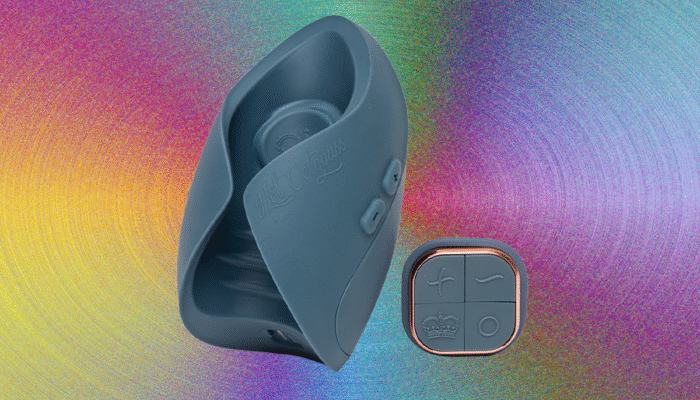A few years ago, I had the chance to check out the prototype of a reengineered robot vacuum called Matic. It doesn’t look like any other robot vacuum. The founders, Mehul Nariyawala and Navneet Dalal, had one key insight: People don’t care about super-powerful robot vacuums with cool tricks, incredible suction power, and huge docking stations, especially if it means that the vacuum is noisy, loud, or annoying to operate.
For a robot vacuum to clean well, it has to be able to navigate a home like a human. That prompted a switch to the Nvidia Jetson Orin chip, which means the vacuum learns how to clean your house on its own. Combined with the fundamentally different hardware design, the result is a game-changing robot vacuum. I do not use that phrase lightly (or ever, really). It’s delightful. It is effective and an absolute pleasure to use, something I can’t say about most robot vacuums. This is the best robot vacuum I’ve ever tested.
Greetings, Earthlings
Photograph: Adrienne So
When the Matic arrived, my husband and kids didn’t even wait for me to open the box. The vacuum rolled out of its box with a little message on the display: “Hello, So Family!” (Unfortunately, their haste meant I didn’t get a video of their reaction, which was very sweet.)
The Matic doesn’t look like any of the mostly identical robot vacuums that arrive in a constant stream at my house. It’s white and square, with rounded corners, and 8 inches high to accommodate a small water tank and a very unusual waste bag. Matic’s waste bag is emblematic of the thoughtfulness that has gone into solving all the common robot vacuum problems. It has diaper salts to house both wet and dry materials. This means you don’t have to empty a dirty water tank and destroy your laundry room sink (not that I’m speaking from experience).
It’s clear, so you can see exactly how full it is, and there’s also a HEPA filter in the bag so you don’t have to remember to replace the HEPA filters separately on the vacuum. (My husband frequently uses a handheld vacuum on the robot vacuum’s filters and replaces them, but I don’t endorse this practice.) Rethinking this simple accessory—a mere afterthought, for most robot vacuums—makes my life so much easier.
Photograph: Adrienne So
The vacuum has six RGB infrared cameras on the front, top, and back, which means that it can see in color and in darkness—you don’t have to have all the lights on for it to work, unlike a robot vacuum that uses basic optical sensors. It took a few minutes to map my home. The app is incredible. It’s a weirdly accurate 3D rendering of my home, differentiating not only the floor surfaces but also furniture and items several feet up.
The app has several buttons that you can toggle. You can change the rendering style to make the map less visually cluttered; you can use a joystick to control the vacuum manually; you can switch to an “airplane mode” to “fly” through your house at eye level, instead of at floor level; and you can record video if you have errors to send to Matic’s team.
The Matic uses what it calls long-term SLAM, or absolute mapping, which is in contrast to most vacuums that navigate via relative mapping, involving a variety of sensors and navigation systems to place walls and obstacles relative to each other. But Matic sees pretty much like a person and makes a mental map. Just like how a visitor to your home can enter through the back door, exit, and then come through the kitchen door, without becoming utterly baffled, Matic doesn’t get confused.
You can even pick the Matic up and place it anywhere you like in your house, and it will know where it is and how to get to the dock. You can see it flying in the dock while it’s being carried, if you’re watching in the app while your husband is doing it. Also, all the mapping data and analysis is streamed locally from your app to the vacuum and is confined to your devices, so you won’t see pictures of your butt on Facebook.
Speaking of husbands, you can also click Add Another User in the settings to easily add a family member to the app and vacuum. No more getting texts while I’m away at a work conference to please run the vacuum in the kitchen!
Marco, Polo
Screenshot SOURCE Adrienne So
The joystick in the app is fine, but it’s not as responsive as a gaming joystick—I just bash the vacuum into things when I try to use it. Instead, I prefer to use my finger to zoom and draw on the map. For example, my husband spilled a bunch of Campari on the floor in the kitchen. I just opened the map, clicked on Clean Area, then Mop. The Matic went straight for it.
You can also teach the vacuum how to get around obstacles. For example, our dining room table is extremely hard for pretty much every robot vacuum to clean around because there are so many different table and chair legs, but under the table also gets dirty, because my children are messy eaters. Instead of putting all the chairs on the table, I can pull the chairs out, click Clean Area, and watch the vacuum sort its way through the table legs. If you can see the way in but the vacuum can’t, you can tap Go Here to an opening on the map, and Matic will figure out how to get the rest of the way in on its own.
Programming automatic learning and graceful failure into the vacuum’s navigation system is amazing. So many robot vacuums can’t figure out how to get around a corner or table leg and just cry for help until they’re rescued or the battery dies, which is the most annoying thing on Earth.
Because it’s an absolute map, it’s pretty easy to add new spaces. I have a room that I block off with a pet gate to keep the dogs out, and you can tell the vacuum to go there, and it will add it seamlessly to the map—you don’t have to constantly remap your entire house as you add rooms.
Screenshot SOURCE Adrienne So
That’s in addition to seamlessly adhering to the regularly scheduled vacuum and mopping, the standard by which I evaluate almost every robot vacuum. The Matic identified a “stair” all on its own—the ledge by the fireplace where every other “smart” robot vacuum gets trapped. It cleans in a three-step process. First, it cleans the general area; then it does an edging pass; and finally, it cleans the toe kicks—the little areas under the sink or oven that make space for your toes. No vacuum has ever succeeded in thoroughly cleaning the sink toe kicks before! Despite these thorough passes, it doesn’t take that much longer to clean—around an hour to vacuum my 12 by 15-foot living room and about two hours to vacuum and mop my 24 by 28-foot kitchen, bathroom, and laundry room space.
It’s the only robot vacuum that’s quiet enough that I can run it while my kids are watching TV, which is important because they leave potato chip crumbs all over the place. Their comfort levels with the vac could also be because it came with several sets of stickers to give it a face, so my children have also developed a sort of weird, Wall-E type relationship with it.
This robot vacuum has a comparatively low suction power of 3,200 Pa—even the cheapest robot vacuum I’ve tested recently has a higher suction power, with high-end ones going as high as 20,000 Pa. But the Matic has made me rethink why anyone even needs that much suction. It’s not like I expect any robot vacuum to dig that deep into my carpet fibers. It’s so quiet and efficient that I end up filling the waste bag just as quickly as with a regular vacuum, and I never skip cleanings because it gets lost or stuck or it’s too loud.
Even the accessories are thoughtful. For example, it comes with a little plumber’s snake if the tube gets clogged. It hasn’t happened so far, but this inclusion is genius, because I’ve been using a chopstick to do this for years without even thinking about it. Finally, it’s much more reasonably priced than any other robot vacuum with this level of functionality, even if I can fill up a waste bag in about three days instead of the projected week. (I blame dogs and kids, not the Matic, for our general filth levels.)
There are a lot of features the Matic doesn’t have, including fairly basic ones like dirt detection and gesture and voice controls. Annoyingly, you have to tidy your house up a bit before you clean—while the Matic recognizes pieces bigger than 1 inch as obstacles to avoid, it will vacuum up my son’s Lego blocks if I leave those out. Nariyawala noted in an email, however, that these features should be arriving as software updates in the coming months, and I’ll retest the Matic once they do.
I’m already reluctant to replace it to test other vacuums. Forget the robotic arm and the huge docking station. Just give me a small, cute, quiet robot vacuum that doesn’t take up a ton of space, is adorable and extremely quiet, does everything I tell it to do easily, can learn for itself, knows when it’s flying, and also costs less than a third of what other top-of-the-line vacuums cost. What more could you ask for? Give me three!




